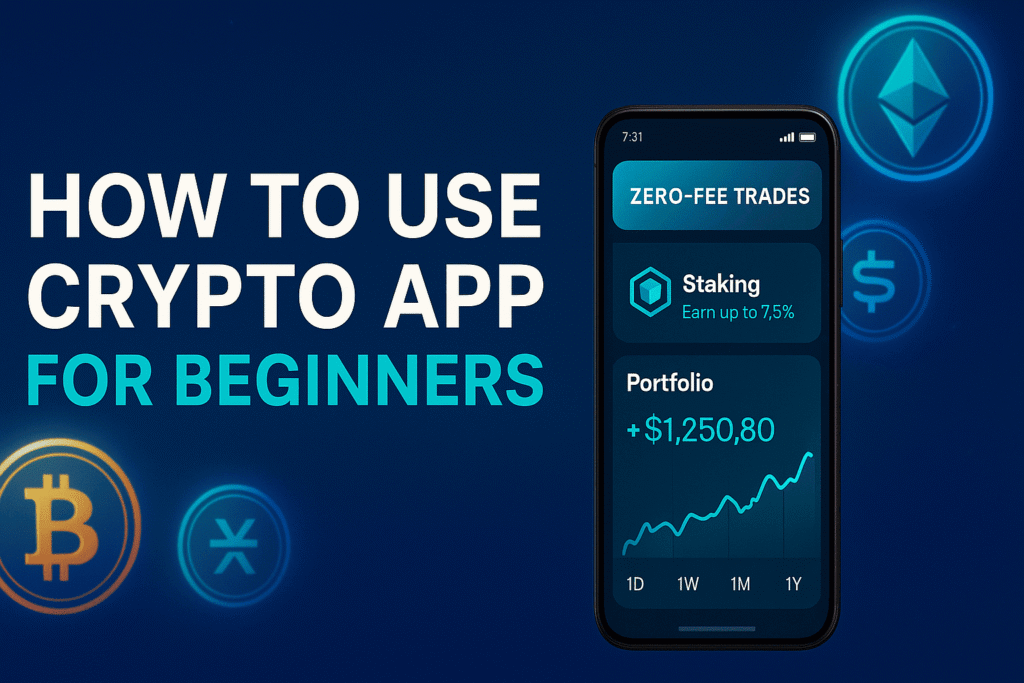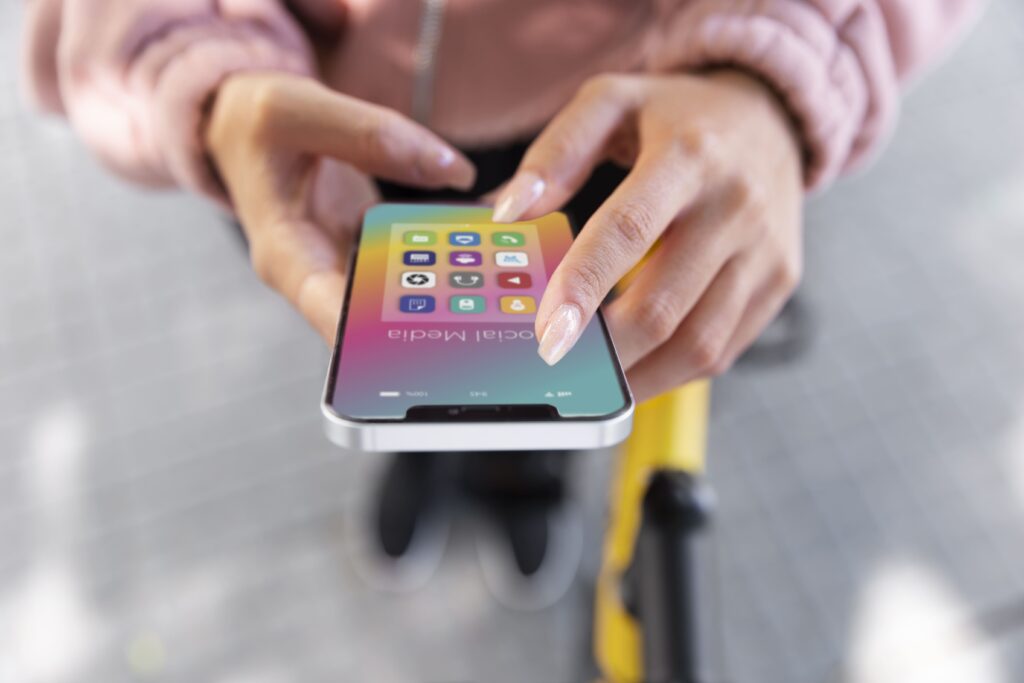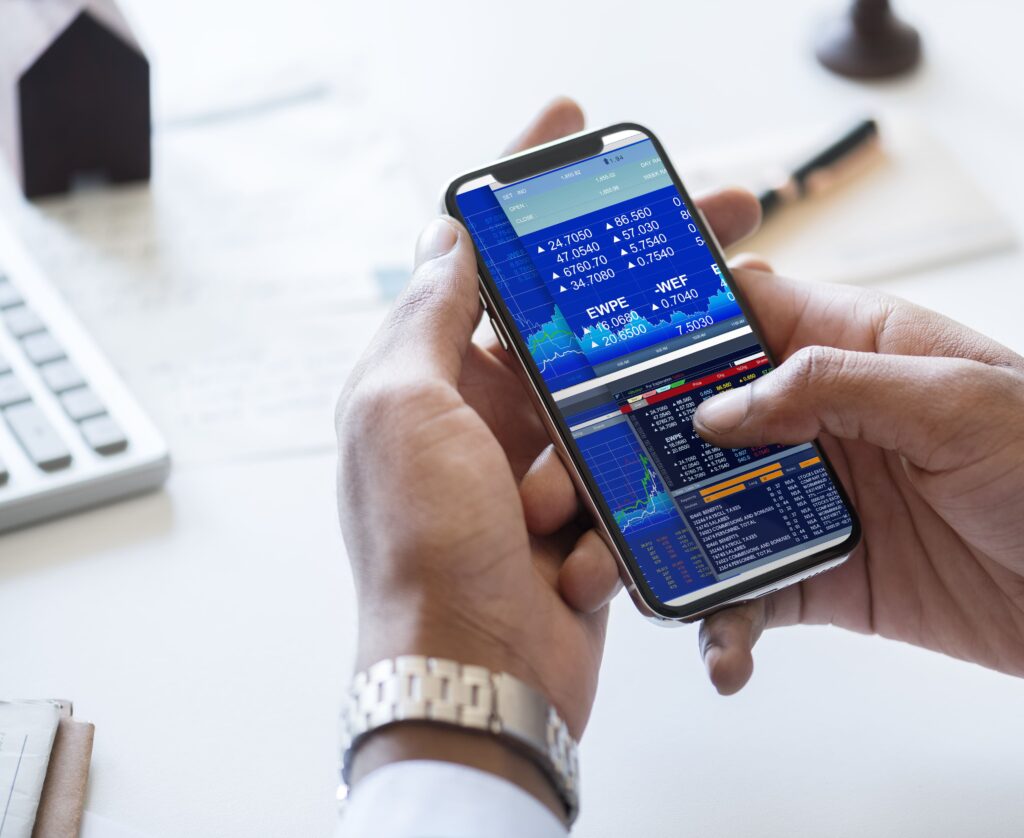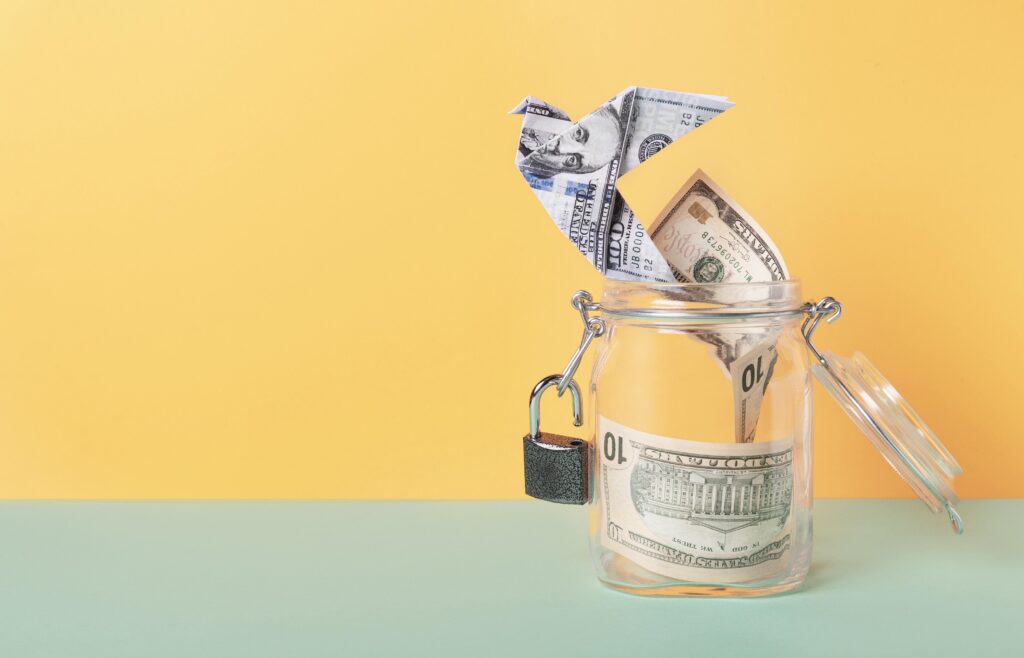How to Use Crypto App for Beginners (2025)

Follow Us On Social Media
How to Use Crypto App for Beginners (2025)
🚀 Welcome to the World of Crypto Apps in 2025
Cryptocurrency has come a long way since Bitcoin’s mysterious birth in 2009. In 2025, crypto is no longer a buzzword for tech enthusiasts—it’s a growing part of personal finance for millions of Americans. From sending digital dollars to staking Solana, crypto apps are changing how we interact with money. And guess what? You don’t need to be a tech genius or a Wall Street expert to join the movement.
Crypto apps have now become incredibly beginner-friendly. Thanks to modern interfaces, strong U.S. regulations, and better customer support, even a total novice can buy their first crypto asset in minutes. In fact, according to Coinbase’s Q1 2025 report, over 72% of new users use mobile apps to enter the crypto world, compared to just 35% in 2020.
But with so many apps out there—Coinbase, Kraken, Swan, Uphold, Bitget—it can get confusing fast. Some focus on Bitcoin only, others offer trading for hundreds of altcoins. Some are centralized and regulated; others give you full control through decentralized wallets. And then there are things like APY, staking, network fees, and cold storage—terms that might sound intimidating at first.
This blog is here to break it all down for you.
We’ll walk you through the key things you need to know before using a crypto app in 2025—from understanding what APY is, to avoiding sneaky fees, to protecting your funds like a pro. By the end, you’ll have the confidence to choose the right app and make your first trade or staking move, all while staying safe and smart.
Let’s get started—crypto doesn’t have to be complicated.
📱 What Is a Crypto App?

A crypto app is a mobile or desktop application that lets you interact with cryptocurrencies—buy, sell, store, stake, or even spend them. Think of it as your digital gateway into the crypto economy, designed to make complex blockchain technology usable with just a few taps.
There are two main types of crypto apps:
- Centralized Apps (CEX) – These are built by companies like Kraken, Coinbase, and Bitget. They’re regulated, require ID verification (KYC), and offer high levels of customer support and security. These apps are great for beginners because they’re easy to use, and you don’t have to worry about managing your own private keys.
- Decentralized Apps (DEX & Wallets) – Apps like MetaMask, Hyperliquid, and Trust Wallet let you directly interact with blockchain networks. You keep full control of your funds—no KYC, but also no safety net. These are better for users with some experience.
So, which one is right for you?
For beginners, a centralized crypto app is the safest place to start. In 2025, they’ve become incredibly user-friendly. You can:
- Link your bank account in minutes
- Buy Bitcoin or Ethereum with as little as $5
- Automatically invest every week (known as Dollar Cost Averaging)
- Earn passive income through staking
- Monitor your entire crypto portfolio in real-time
Crypto apps are no longer just about trading. Many now offer NFT access, DeFi lending, and even tax reporting tools.
According to a 2025 survey by Investopedia, 67% of new U.S. crypto investors prefer using mobile apps over web platforms due to their speed, notifications, and easier access to features like staking and APY tracking.
Bottom line: A crypto app is your all-in-one toolkit for entering the crypto space—built to be as easy as online banking, but way more powerful.
🧩 How to Choose the Right Crypto App

Choosing the right crypto app in 2025 can feel like walking into a mall full of shiny tech—everything looks good, but not everything is worth your time (or money). With dozens of platforms out there, your choice can make the difference between a smooth, secure experience and a frustrating one.
So, what exactly should beginners look for?
✅ 1. User-Friendly Interface
As a first-timer, you want an app that doesn’t make you feel lost. Apps like Coinbase and Swan Bitcoin are loved for their clean dashboards, clear language, and guided steps. You’ll be able to fund your account, buy your first coin, and view your portfolio all from one screen—without needing to Google every button.
💰 2. Low or Transparent Fees
Some apps claim “zero-fee” trading but hide costs in the spread (the difference between buy/sell prices). Look for platforms like Bitget or Hyperliquid, which are trending in 2025 for truly zero-fee or ultra-low-fee models.
Other apps, like Kraken, show a detailed fee breakdown before you confirm your trade. Transparency is key.
🔐 3. Security Features
At a minimum, your app should offer:
- 2FA (Two-Factor Authentication)
- Biometric logins (fingerprint or Face ID)
- Cold storage for user funds
Kraken and Gemini still lead in U.S. security standards, using bank-grade encryption and offline vaults to protect your assets.
📈 4. Staking/APY Opportunities
Want your crypto to grow while you hold it? Look for apps offering staking. In 2025, Uphold offers 6.3% APY on ADA, while Kraken offers 4.2% on ETH. But be careful—don’t chase unrealistic yields from sketchy apps.
🧾 5. Customer Support & U.S. Compliance
Live chat, email support, and U.S. licensing (e.g., FinCEN registration) are a must. Apps like Swan and Kraken have 24/7 support and educational tools built-in.
Pro Tip: Start with one app, but stay open to trying others as your needs evolve. You might trade on one app and stake on another.
You also read this blog – Crypto Trading Apps for Beginners: A Comprehensive Guide to Getting Started
📊 Understanding APY and Staking in Crypto Apps

If you’re new to crypto, you’ve probably come across the term APY (Annual Percentage Yield) and wondered, “Is this like earning interest at a bank?” The answer is: yes, but often with better returns—and higher risks if you’re not careful.
💡 What Is APY in Crypto?
APY in crypto is the percentage of return you earn on your assets over one year, including the effects of compound interest. It’s most commonly used when you’re staking coins—locking them in the network to help validate transactions and earn rewards.
For example, if you stake 100 ADA (Cardano) on an app offering 6% APY, you’ll have about 106 ADA after one year, assuming daily or monthly compounding and no fluctuations.
In 2025, many U.S.-based crypto apps offer safe and regulated APY options, such as:
- Kraken – 4.2% on ETH, 7.5% on DOT
- Uphold – 6.3% on ADA, 5.5% on USDC
- Swan Bitcoin – 2.1% APY on auto-Bitcoin savings plans
These are considered moderate-risk, beginner-friendly staking options.
📉 The Risk Side of APY
Not all APYs are created equal. If you see an app promising 20% or more, be skeptical. High yields often mean:
- Exposure to new, unproven tokens
- Hidden platform or slashing risks
- Potential for rug pulls or app closures
As Investopedia noted in its 2025 crypto trends report:
“The best APYs are often found in regulated staking pools with a long-term, stable user base.”
🧠 How to Stake Smartly
Here’s a basic checklist:
- Start with coins you understand (e.g., ETH, ADA, DOT)
- Use well-known apps like Kraken or Coinbase
- Check if staking has a lock-up period
- Read the fine print—some platforms auto-renew your staking!
Bottom line: APY is a powerful way to grow your holdings, but always balance returns with reliability and risk awareness. Start small, stay informed, and don’t fall for get-rich-quick APYs.
💸 Fees You Should Watch For
Let’s talk money—not what you earn, but what you lose if you’re not careful.
Crypto apps have become much more transparent in 2025, but hidden fees can still sneak in and eat into your profits. For beginners, understanding the types of fees and how to spot them is just as important as picking the right coin to invest in.
🧾 Types of Fees in Crypto Apps
Here are the most common fees you’ll encounter:
| Fee Type | What It Means | Typical Range (2025) |
|---|---|---|
| Trading Fees | Charged when you buy or sell crypto | 0% to 1.5% per transaction |
| Spread Fees | Difference between the buying and selling price | 0.25% to 2% (often hidden) |
| Withdrawal Fees | Charged to move funds to another wallet or bank | Varies by coin (e.g., $5-$15) |
| Network Fees | Paid to the blockchain for processing transactions | Dynamic (e.g., ETH $1–$20) |
| Inactivity Fees | Some apps charge for dormant accounts (rare) | $0 to $10/month |
🧠 Real-World Examples (2025)
- Coinbase: Charges 1.49% per buy/sell for most users, plus a spread of ~0.5%. Easy to use, but not the cheapest.
- Kraken: 0.26% or less in trading fees for most users. Transparent and fee-efficient.
- Bitget & Hyperliquid: Offer zero trading fees, which makes them popular among U.S. day traders.
- Uphold: No trading fees but includes a spread (~0.9–1.2%).
Apps rarely advertise their spread fees, so always compare the market price of a coin on CoinMarketCap or TradingView before buying.
🔍 Pro Tips to Minimize Fees
- Use limit orders instead of market orders if your app allows it (especially on Kraken Pro).
- Avoid frequent trading. Each move can cost you.
- Check staking and withdrawal policies. Some platforms charge you to unstake or withdraw early.
- Look for zero-fee promotions. Bitget often runs these for new users.
🛑 Watch Out For:
- “Zero-fee” apps that actually inflate the spread.
- Surprise fees on mobile vs desktop platforms.
- Sudden network congestion—ETH gas can spike during market surges.
Bottom line: Always read the fee section of your app’s FAQ. A few extra minutes of research can save you hundreds of dollars over the year.
Do you want to review this crypto app ? , Check out this blog – Edge Wallet App Review: Trade Bitcoin and Altcoins Safely in 2025
🔒 Safety First — How to Protect Your Funds

In 2025, crypto is safer than ever—but only if you take the right precautions. While many apps offer bank-grade security, mistakes like weak passwords or falling for phishing links can still cost you everything.
Think of your crypto like cash: once it’s gone, there’s no undo button. That’s why protecting your funds is just as important as choosing the right coin or staking plan.
🔐 Must-Have Security Features
When choosing a crypto app, make sure it offers:
- Two-Factor Authentication (2FA): Adds a second layer of protection, usually via an app like Google Authenticator or Authy.
- Biometric Logins: Face ID or fingerprint access helps secure your phone.
- Cold Wallet Storage: Platforms like Kraken and Gemini keep over 90% of user funds offline—safe from online hacks.
- Address Whitelisting: Prevents withdrawals to unknown wallets unless approved by you.
- Real-Time Alerts: Get notified of all transactions or login attempts.
⚠️ What to Watch Out For
Even if your app is secure, you can still be the weak link. Here are common mistakes beginners make:
- Using the same password across apps
- Ignoring suspicious emails or fake popups (phishing)
- Downloading fake versions of crypto apps from unofficial websites
- Clicking random “airdrop” or giveaway links on Twitter or Telegram
In 2025, phishing scams are getting smarter. According to the FBI’s annual cybercrime report, crypto-related scams cost Americans $3.2 billion in 2024, a 14% rise from the previous year.
✅ Pro Tips for Staying Safe
- Bookmark the official app website (e.g., kraken.com, uphold.com)
- Never share your seed phrase with anyone—not even customer support
- Use a hardware wallet (like Ledger or Trezor) for large amounts
- Enable all security notifications in your app settings
- Regularly update your app and phone OS
📢 Real Advice From the Field
“In crypto, you are your own bank. With great power comes great responsibility.”
— Andreas Antonopoulos, crypto educator
“A strong password is your first line of defense. Don’t treat it lightly.”
— Kraken Security Team, 2025 Blog
Bottom line: You don’t need to be a cybersecurity expert—but if you follow the basics, you’ll be far ahead of most users. Stay cautious, stay informed, and treat your crypto like your real money—because it is.
🛠️ Getting Started — Step-by-Step Guide
Starting your crypto journey might seem overwhelming, but in 2025, crypto apps are designed with beginners in mind. You don’t need to know how blockchain works or understand complicated charts. With the right app, you can start safely in just a few steps—similar to downloading a banking app or ordering food online.
Here’s a simple, step-by-step guide to using your first crypto app:
🧩 Step 1: Pick a Trusted App
Choose a regulated, beginner-friendly platform. In the U.S., top picks include:
- Coinbase – great for beginners, strong educational tools
- Kraken – ideal for users who want more control
- Swan – focused on long-term Bitcoin accumulation
- Uphold – supports crypto + stocks + staking
🟢 Pro Tip: Always download apps from the official app store—never through random links or ads.
🪪 Step 2: Create Your Account & Verify ID
Most apps require:
- Name and email address
- A secure password
- A government-issued ID
- Sometimes a live selfie or facial scan
This step is part of KYC (Know Your Customer) rules and protects users from fraud.
💵 Step 3: Add Funds
You can typically fund your account through:
- Bank transfers (ACH)
- Credit/Debit cards
- Apple Pay or Google Pay
- PayPal (on supported apps)
- Or by transferring crypto from another wallet
Deposits usually reflect within minutes, though bank transfers can take 1–3 days.
🪙 Step 4: Buy Your First Crypto
Start with a small amount. You don’t need hundreds of dollars—most apps let you buy:
- $5 worth of Bitcoin
- $10 of Ethereum
- Or stakeable coins like ADA or DOT
Preview the fees before confirming the transaction.
💼 Step 5: Stake or Save
Once you own crypto, explore staking options:
- Kraken: 4.2% APY on ETH
- Uphold: 6.3% APY on ADA
- Coinbase: 5%+ on USDC
Make sure to read lock-up terms and withdrawal limits before staking.
📲 Step 6: Monitor & Learn
Most apps offer:
- Real-time portfolio tracking
- Price alerts
- In-app news
- Education tools (like Kraken Learn or Coinbase Earn)
Spend 5–10 minutes a day reviewing your assets and learning something new. Avoid panic-buying or reacting to short-term price drops.
✅ Final Tip: Start Slow
Don’t feel pressured to “go all in.” Set a weekly or monthly budget. Automate purchases if possible (DCA method), and focus on long-term learning.
You Should try these 5 crypto apps, Here is the full guide – Crypto Made Easy: 5 Beginner Crypto Apps You Should Try This Year
🧭 How to Choose Safely
In a world where every app promises the “safest” crypto experience, how do you actually choose safely—especially if you’re new? In 2025, most U.S.-based crypto platforms are better regulated, but not all of them are beginner-safe. Choosing the wrong app could expose you to unnecessary fees, scams, or even lost funds.
Here’s how to choose a crypto app safely and confidently, especially if it’s your first time investing.
✅ 1. Is the App Regulated in the U.S.?
Always start with U.S.-compliant platforms. Look for apps that:
- Are registered with FinCEN (Financial Crimes Enforcement Network)
- Have state licenses (like New York’s BitLicense)
- Publish their legal docs and user agreements clearly
Kraken, Gemini, Swan, and Coinbase are great examples. They follow Know Your Customer (KYC) and Anti-Money Laundering (AML) rules.
✅ 2. What Security Features Does It Offer?
Look for:
- 2FA (Two-Factor Authentication)
- Biometric login (Face ID, fingerprint)
- Cold wallet storage (offline)
- Address whitelisting
- Activity alerts
Red flag: If the app doesn’t support 2FA or doesn’t explain its security process—avoid it.
✅ 3. Is the Company Transparent?
Reputable apps:
- Show live trading fees
- Explain their APY and staking lock-ups
- Offer public audits or safety certifications
- Provide customer service with real humans
Bitget, for instance, has a strong support desk and even offers copy-trading, but makes sure users understand the risks first.
✅ 4. Check What Real Users Are Saying
Go beyond star ratings in app stores. Check:
- Reddit (r/cryptocurrency)
- Twitter/X threads
- YouTube reviews
- Trustpilot scores
Look for repeated complaints like “I couldn’t withdraw” or “my funds disappeared”—those are red flags.
✅ 5. Use Test Amounts
Once you’ve chosen your app:
- Deposit a small test amount (e.g., $10)
- Make a tiny trade
- Try a withdrawal to your bank or wallet
If everything works smoothly, you’ve likely found a safe place to begin.
Bottom line: Choosing safely means checking for regulation, real security, and trust from actual users—not just flashy advertising. Taking 10 extra minutes to verify your app can protect your money and peace of mind.
🚫 Common Mistakes Beginners Should Avoid
Starting your crypto journey in 2025 is easier than ever—but even the best apps can’t protect you from human error. Many beginners lose money not because of bad apps, but because of avoidable mistakes. Being aware of these can save you from stress, lost funds, or even scams.
Let’s break down the most common beginner traps—and how to avoid them.
❌ 1. FOMO Buying
Fear of Missing Out (FOMO) is real in crypto. When prices surge, social media lights up with hype, and it’s tempting to “buy before it’s too late.”
The reality? Most people buy at the top and panic-sell at the bottom.
✅ Solution: Start with a fixed weekly or monthly budget using Dollar Cost Averaging (DCA). Apps like Swan or Coinbase offer automated DCA tools that reduce emotional decision-making.
❌ 2. Ignoring Fees and Spreads
Some beginners only look at the purchase amount, ignoring the fees and hidden spreads. Over time, these small costs can add up—especially if you’re trading frequently.
✅ Solution: Always compare market prices on sites like CoinMarketCap before making trades. Use apps with transparent fees like Kraken or Bitget.
❌ 3. Falling for Scams
Fake websites, fake airdrops, Telegram messages asking for your seed phrase—it’s all out there.
In 2024 alone, the FBI reported $3.2 billion in crypto-related losses, with phishing scams leading the charge.
✅ Solution: Never share your seed phrase. Only trust official websites. Bookmark them. Turn on email/SMS notifications to monitor activity.
❌ 4. Choosing Sketchy Apps for High APY
If an app you’ve never heard of offers 20% APY or promises to double your money overnight, it’s a red flag.
✅ Solution: Stick to regulated apps that clearly outline staking terms. Always research the project behind the token offering APY.
❌ 5. Not Learning About Taxes
In the U.S., crypto is taxable—even if you only earn a few dollars.
✅ Solution: Use apps like Coinbase or Kraken, which offer built-in tax reporting tools. Platforms like CoinTracker and Koinly can help during tax season.
Bottom line: Crypto is powerful, but not without risk. Learn from other people’s mistakes so you don’t have to learn the hard way.
💬 Real User Case Studies & Reviews
📱 Jenny, 27 – First-Time Investor (Texas)
“I started with Coinbase because it felt safe. I invested $25 every Friday in Bitcoin. In 6 months, I had over $800 and learned more from Coinbase Earn than any YouTube video.”
🧑💼 Raj, 34 – Side Hustler (California)
“I use Kraken to stake Polkadot (DOT) at 7.5% APY. It’s my monthly passive income. The fees are low, and I love their security features.”
👨🎓 Marcus, 22 – College Student (New York)
“I got scammed on a Telegram airdrop early on. Now I only use apps I see listed on CoinMarketCap or recommended by Reddit. Bitget’s zero-fee model helped me get into trading safely.”
🙋 My Personal Take as a Crypto User
When I first started using crypto apps, I was overwhelmed by the technical jargon and worried about losing money. The turning point came when I switched to Swan—a Bitcoin-only app focused on simplicity and long-term investing.
What I appreciated most was:
- A clean interface (no meme coins or 100+ charts)
- Auto-investing that made saving feel effortless
- Email lessons that explained staking, taxes, and FOMO risks in plain English
From there, I explored Kraken for staking ETH and Coinbase for quick trades. I now use a combination of:
- Swan for Bitcoin DCA
- Kraken for ETH + staking DOT
- CoinStats to track my portfolio
- And a Ledger wallet for long-term cold storage
Crypto apps today truly feel like banking apps—with way more upside if used responsibly.
🎯 Final Thoughts + CTA
Crypto Made Simple — Start Smart, Stay Safe
Congratulations—you’ve just covered everything you need to know as a crypto beginner in 2025. From choosing a reliable app to understanding APY, fees, staking, and security—you now have the blueprint to start your crypto journey safely and smartly.
Remember: the crypto world is filled with opportunity, but also hype, noise, and risk. The key is to go slow, stay informed, and only invest what you’re comfortable with.
Let’s recap the essentials:
- ✅ Choose a regulated, beginner-friendly app (Kraken, Coinbase, Swan, Uphold)
- ✅ Understand how fees and APY work—don’t chase unrealistic returns
- ✅ Prioritize security: 2FA, cold storage, strong passwords, and never sharing your seed phrase
- ✅ Avoid common mistakes like FOMO buying, ignoring fees, or falling for scams
- ✅ Use staking and DCA (Dollar Cost Averaging) to grow your portfolio steadily
🗣️ Top Trusted Source Quotes (Recap)
“Crypto apps are finally meeting the regulatory and safety standards retail investors expect.”
— Jesse Powell, Co-founder of Kraken“A strong password is your first line of defense. Don’t treat it lightly.”
— Kraken Security Team, 2025“In crypto, you are your own bank. With great power comes great responsibility.”
— Andreas Antonopoulos
❓FAQs — Quick Answers for Beginners
Q1. What’s the safest crypto app in the U.S.?
A: Kraken and Coinbase are both regulated, secure, and beginner-friendly.
Q2. Can I start with just $10?
A: Yes! Most apps allow small purchases—perfect for learning without big risks.
Q3. What is APY, and how does it work?
A: APY is the annual return you earn from staking your crypto. It’s like interest, but in crypto.
Q4. Is staking risky?
A: Not if you stake trusted coins (ETH, ADA) on regulated platforms. Always read the lock-up terms.
Q5. What if I forget my password?
A: Most apps offer recovery via email or ID. Just make sure 2FA is enabled and seed phrases are backed up offline.
Q6. Do I have to pay tax on crypto earnings?
A: Yes. In the U.S., crypto is taxable. Apps like Coinbase and Kraken generate tax reports.
Q7. Should I use more than one app?
A: Many users do. For example, Swan for long-term savings, Kraken for trading + staking, and Trust Wallet for DeFi access.
🔔 Your Turn: Take the First Step
You don’t need to be a tech expert to succeed with crypto in 2025. Download your chosen app, make a small buy, and start learning by doing.
💡 Need a suggestion to begin?
Start with Swan for long-term Bitcoin investing, or use Kraken for secure trading and staking—all beginner-friendly.
📣 Ready to get started?
Pick your app. Start with $10. Stake safely. And begin your journey into the future of finance—on your terms.
Follow Us On Social Media

3 Comments